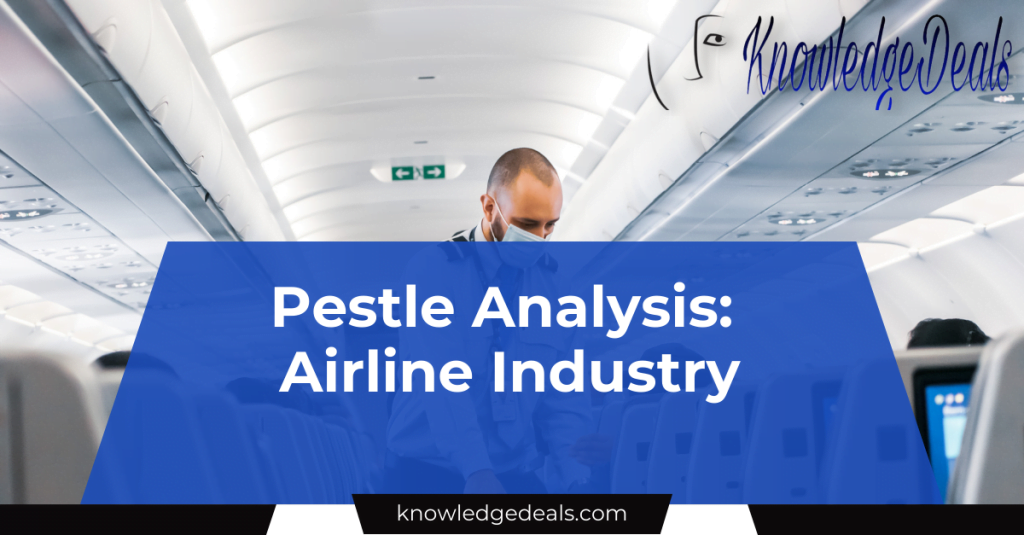[ad_1]
In this article, we will discuss the Pestle analysis of the airline industry. Pestle analysis is a strategic tool used to analyze the external environment in which a business operates. It examines the political, economic, social, technological, legal, and environmental factors that can have a significant impact on the industry. Understanding these factors is essential for the airline industry to adapt and thrive in a constantly changing environment.
What are the Political Factors affecting the Airline Industry?
Political factors play a crucial role in shaping the airline industry. Government regulations and policies can have a direct impact on the operations and profitability of airlines. For example, government regulations regarding safety standards, security measures, and air traffic control can significantly affect the cost of operations for airlines. Additionally, international trade agreements and aviation treaties can impact the ability of airlines to operate in foreign markets. Political instability, conflicts, and geopolitical tensions can also disrupt international travel and impact the demand for airline services.
Another political factor that affects the airline industry is government subsidies and financial support. Airlines often rely on government support, such as grants, tax breaks, and funding for airport infrastructure, to remain competitive and sustainable. Changes in government policies and funding decisions can have both positive and negative effects on airline operations and profitability.
How do Economic Factors Impact the Airline Industry?
Economic factors such as GDP growth, inflation rates, exchange rates, and consumer spending patterns have a significant impact on the airline industry. Fluctuations in economic conditions can directly affect the demand for air travel. During periods of economic growth, consumer confidence and disposable income tend to rise, leading to increased travel and tourism activities. Conversely, during economic downturns, consumers may reduce their travel spending, leading to decreased demand for airline services.
Fuel prices are another critical economic factor that impacts the airline industry. Fuel costs represent a significant portion of an airline’s operating expenses, and fluctuations in oil prices can directly affect profitability. Airlines must closely monitor and manage fuel expenses to remain competitive and profitable in the face of volatile economic conditions.
What are the Social Factors Influencing the Airline Industry?
Social factors, including demographic trends, lifestyle changes, and consumer preferences, can significantly influence the airline industry. Changing consumer behaviors and preferences, such as a growing demand for sustainable travel options and personalized experiences, have prompted airlines to innovate and adapt their services to meet evolving customer needs.
Additionally, cultural and social norms can impact travel patterns and destination choices. Airlines must consider the diversity of their customer base and tailor their marketing strategies and services to accommodate different cultural preferences and expectations. Moreover, advancements in technology and the rise of social media have empowered consumers to share their travel experiences, influence others, and hold airlines accountable for their service quality and social responsibility practices.
How do Technological Factors Shape the Airline Industry?
Technological advancements have revolutionized the airline industry, transforming the way airlines operate, communicate, and interact with customers. Innovations in aircraft design, engine efficiency, and aviation technology have enhanced safety, reduced fuel consumption, and increased the capacity and range of airplanes. Airlines are also leveraging digital technology to improve operational efficiency, enhance customer experience, and streamline booking, check-in, and in-flight services.
Furthermore, the emergence of big data analytics, artificial intelligence, and predictive modeling has enabled airlines to gain valuable insights into customer behaviors, market trends, and operational performance. These technological capabilities empower airlines to optimize route planning, pricing strategies, and loyalty programs, ultimately improving revenue and cost management.
What are the Legal and Environmental Factors relevant to the Airline Industry?
Legal and regulatory factors, such as aviation laws, safety regulations, environmental protection laws, and competition policies, shape the operating environment of the airline industry. Airlines must comply with a myriad of domestic and international regulations, ensuring safety, security, and fair competition. Additionally, environmental concerns, including carbon emissions, noise pollution, and sustainability, have led to increased pressure on airlines to adopt eco-friendly practices and invest in cleaner, more fuel-efficient technologies.
Antitrust laws and regulations also play a significant role in shaping the competitive landscape of the airline industry, influencing market consolidation, alliances, and merger and acquisition activities. Understanding and navigating the complex legal and environmental landscape is essential for airlines to maintain compliance, mitigate risks, and contribute to sustainable, responsible growth.
Conclusion
In conclusion, conducting a Pestle analysis of the airline industry is imperative for airlines to identify, assess, and respond to the external factors that shape their operating environment. By understanding the political, economic, social, technological, legal, and environmental influences, airlines can strategically adapt and mitigate risks, ensuring long-term sustainability and competitiveness. Adapting to emerging trends and proactively addressing challenges will enable airlines to thrive in a dynamic and highly competitive industry.
FAQs (Frequently Asked Questions)
How does the Pestle analysis help airlines?
The Pestle analysis helps airlines gain a comprehensive understanding of the external factors that impact their industry, enabling them to make informed strategic decisions and adapt to changing environments.
What are some examples of political factors in the airline industry?
Examples of political factors include government regulations, safety standards, aviation treaties, government subsidies, and geopolitical tensions that can influence airline operations and profitability.
How do economic factors affect the demand for air travel?
Economic factors such as GDP growth, inflation rates, consumer spending, and fuel prices directly impact the demand for air travel, influencing airlines’ profitability and sustainability.
What role do technological advancements play in the airline industry?
Technological advancements drive operational efficiency, safety improvements, customer experience enhancements, and data-driven decision-making, enabling airlines to remain competitive and innovative.
How do legal and environmental factors shape the competitive landscape of the airline industry?
Legal and environmental factors influence safety regulations, competition policies, environmental protection laws, and sustainability practices, shaping the industry’s compliance and long-term viability.
[ad_2]





